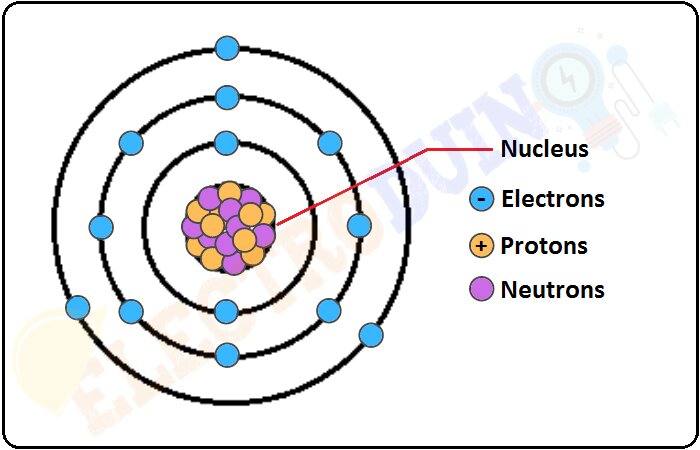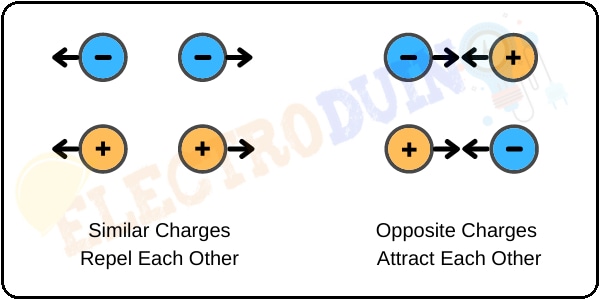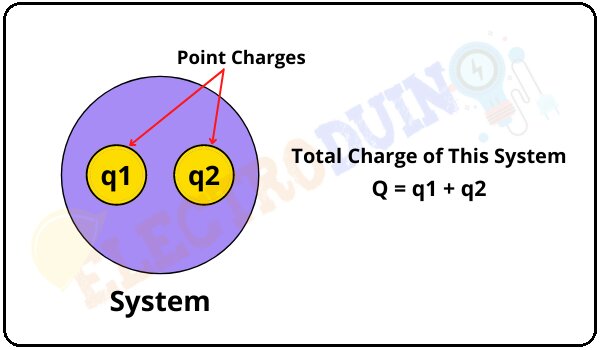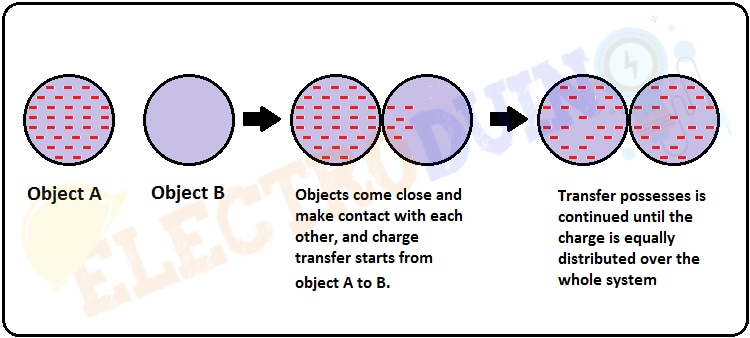What is Electric Charge – Its Unit, Symbol, Types and Properties
Hello friends! Welcome back to ElectroDuino. This blog is based on Electric Charge. Here we will discuss what is Electric Charge, the Structure of an Atom, Unit, Symbol, Types, and Basic Properties.
What is Electric Charge?
Electric charge or charge is the fundamental physical property of matter that causes it to experience a force when kept in an electric or magnetic or electromagnetic field.
Everything in this universe, which has mass and volume (occupy some space) is called matter. Atoms are the basic part of all matters, every matter in this universe is made of atoms.
Structure of an Atom
The atoms are made up of protons, neutrons, and electrons. The center of an atom is known as the Nucleus that consists of Neutrons and Protons. And the electrons are revolving around the nucleus in different orbits. Electrons have a negative charge and protons have a positive charge but the Neutrons have no charge. The charge of a Proton is equal to +1.6×10-19 C and the charge of an electron is equal to -1.6×10-19 C . Basically, balanced atoms are electrically neutral, because the number of electrons is equal to the number of protons in each atom. Protons are tightly bounded in the nucleus, that why the Protons cannot be detached from the nucleus by any normal process, but using some process electrons can be easily added or detached from the outermost orbit of the atom. So, the type of charge property of an atom depends on the electron gains and loss by this atom. If an atom loses one or more electrons it becomes positively charged, because the number of protons (positive charge) is greater than the number of electrons (negative charge). In contrast, if an atom gains one or more electrons it becomes negatively charged because the number of electrons (negative charge) is greater than the number of protons (positive charge).

If two similar charged particles come close to each other, they get repelled because the repulsive force work between them. On the other hand, if two opposite charged particles come close to each other, they get attracted because the attractive force works between them.

Symbol and Unit of Electric Charge
The symbol ‘Q’ or ‘q’ is used to denote Electric Charge and Coulomb (C) is the SI unit of charge. The amount of charge that is passed through the cross-section of an electrical conductor in one second when the current has a value of one ampere is known as coulomb.
1/1.6 x 10-19 or 6.25 x 1018 number of electrons have an electric charge of 1 Coulomb.
Types of electric charges
According to the above discussion, we can understand that electric charges are generally two types: Positive and Negative
- Negative Charge: When an object has more numbers of electrons than protons, it means that the object has a negative charge.
- Positive Charge: When an object has less number of electrons than protons, it means that the object has a positive charge.
When an object has the same number of electrons and protons, it means that the object is neutral. Because the negative charges of electrons and positive charges of protons would cancel out each other.
Basic Properties of Electric Charge
There are various types of properties of Electric Charges, but the basic and important properties of electric charge are,
Additive nature of charge:
The additive nature is one of the basic properties of electric charge. The total electric charge of a system is equal to the algebraic sum of all charges present in this system. This is also known as the law of superimposition of electric charge. For Example, if a system contains two point charges namely q1 and q2. So, the total charge (Q) of this system is the algebraic sum of the charges q1 and q2. It means the total charge
Q = q1 + q2

Similarly, If a system has ‘n’ numbers of point charges, namely q1, q2, q3, q4 ………. qn. Then, the total charge (Q) of this system is the algebraic sum of all charges. It means the total charge
Q = q1 + q2 + q3 + q4 +………+qn.
The charge has only magnitude but no direction, which means, the charge can be either positive or negative. So, while we adding point charges to calculate the total charge of a system, this time we must include the appropriate sign (+ or – ) of the charges in the equation.
For Example, if a system has +q1, -q2, -q3, and +q4 point charges. So, the total charge (Q) of this system is
Q = (+q1) + (-q2) + (-q3) + (+q4)
=q1 – q2 – q3 + q4
Also Read: What Are Magnetic Susceptibility And Permeability?
Conservation of Electric Charge:
The Law of Conservation of Charge states that the charges are neither created nor destroyed, but Charges are can be transferred from one body to the other.
For example, we take two objects namely A and B, object A has some charge, and object B has no charge. If these two objects come close and make contact with each other, then some charge is transferred from object A to object B. This transfer possesses is continued until the charge is equally distributed over the whole system. But in this process, no charge is created or destroyed, it is only transferred from one object to another object.

Quantization of Electric Charge:
The quantization of electric charge says that the total charge of the body is always an integral multiple of a basic unit of charge. The basic unit of charge means the amount of charge on one electron, is denoted by “e” and its value is 1.6 × 10-19C.
The equation of the quantization of electric charge is
q = ne
where n is an integer but not a fraction or irrational number, ‘n’ can be any zero, positive or negative integer like 0, ±1, ±2, ±3, ….. etc.
Electric current is scalar or vector?
The charge is a scalar quantity because the charge does not have a characteristic direction. The charge can be traveling in a particular direction, because of the potential difference between the two places.




Pingback: What is Electric Current – its Unit, Symbol, Types, and measurement »